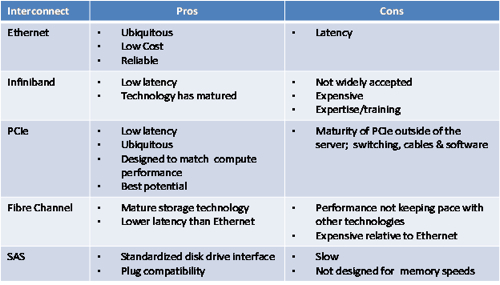This article is more than 1 year old
Disk-flash storage mix biz chief on the SSD situation
A NexGen view of flash
Interview EMC has confirmed a 3-layer enterprise flash cake composed of server cache, server-area Thunder array and SAN-attached Xtremio technology, but not a new design hybrid flash and disk drive array.
Start-up NexGen has such an array. We asked NexGen founder and CEO John Spiers questions about his company's views on solid state storage as well as the various aspects of the NexGen flash choice.
The Register: Why is solid state a game-changing technology for the storage industry?
John Spiers: Processor, computer buses and networks are capable of transferring data at nano- and micro-second latencies while electromechanical disk drives are 1,000 times slower with millisecond access latencies, introducing a huge bottleneck.
These bottlenecks are typically masked with NVRAM, short stroking and other technologies. Solid-state storage delivers microsecond access latency and is non-volatile. Disk drives also consume large amounts of power and space in data centres. Solid state provides a means to reduce the operating expenses associated with disk drives by 90 per cent.
... Right now, all of the storage system vendors are scrambling to figure out how to avoid limiting solid state performance because today’s product architectures weren’t designed for the extreme low latency characteristics that solid state is capable of.
Bottom line, solid state is a game changer because:
- it delivers orders of magnitude lower latency;
- the lower latency requires new storage architectures to avoid bottlenecks;
- the lower latency in shared storage means more consolidation and workload contention, which exposes the need for the ability to manage and provision performance.
The Register: How do solid state, servers and storage arrays best work together?
John Spiers: Solid state or NAND flash is close enough to the performance of RAM yet it is much less expensive, therefore it can be used as an acceptable substitute for RAM in a server. It is also non-volatile so that writes can be cached along with reads without losing data from a power loss. Solid state reduces the I/O latency of storage solutions and can cost effectively replace large number of short stroked or striped disk drives to achieve the targeted performance level.
The Register: What role does server caching play?
John Spiers: It addresses single application or single physical server performance; this is perfect for the applications that require the highest level of performance or lowest latency.
But server-side solid-state caching hasn’t addressed the following:
- Cache coherency across multiple physical devices
- Redundancy and High Availability
- One approach to solve the coherency/HA issue is called write-through, but that severely limits the performance/latency improvements.
- Application and virtualisation software compatibility, to maximise the benefits, application vendors need to retool how they access memory on the server.
- The ability to share solid-state performance with other applications in the environment.
- Performance consistency in a virtual server/shared environment
- Finally, quality of service.

John Spiers
The Register: What role does storage memory play in servers (solid state as a memory tier and not a cache)?
John Spiers: Similar problems exist with this approach as well:
- How to migrate stale data out of the tier
- Redundancy and High Availability
- Application and virtualization software compatibility
- Write coalescing
- Application sharing/partitioning
- Performance consistency in a virtual server/shared environment
- Quality of Service
NexGen SAN based solid state eliminates all these problem areas.
The Register: What role does networked solid-state storage play?
John Spiers: Shared solid state alleviates the technical challenges highlighted above and allows customers to centrally manage all their solid-state storage and allow all their applications to benefit from the performance gain. SAN vendors can dynamically optimise the solid state for different application workloads and provide a guaranteed I/O service level back to the application along with redundancy and High Availability.
The DAS vs SAN value proposition:

The Register: What are the various interconnect choices for linking a flash array to servers and what are their pros and cons?

The Register: What role does solid state play in a traditional disk drive storage array?
John Spiers: A short term solution until SCSI Express, NVMe or other PCIe based arrays are available.
The Register: What are the benefits of having a traditional storage array use all solid-state drives?
John Spiers: The benefits are focused around vendors not customers. This approach is the path of least resistance. Vendors can go to market in less time because it takes less R&D effort. Customers achieve some marginal performance improvement but the performance potential of solid state is severely limited. Solid-state drives are expensive and customers end up only achieving 2-3x the IOPS over 15k disk drives when solid-state devices are capable of 1000x IOPS.
In this model, customers are forced to trade capacity for performance.
The performance limitations are due to bottlenecks up and down the data path. The industry has realised this and is working on the NVMe and SCSI Express standards, which are both PCIe based. NexGen’s solid state is already on the PCIe bus, so we’re ahead of the industry and will be compatible with these standards when they are ratified.
The Register: What is NexGen doing to take advantage of solid-state storage?
John Spiers: We believe solid state by itself is not a silver bullet. It needs the correct architecture to maximise performance and new capabilities to ensure that it’s used efficiently. NexGen has architected its SAN storage products from the ground up to leverage solid-state storage. Using PCI-e based solid state with a cut-through architecture, NexGen delivers optimal efficiency and performance from solid state, which results in lower $/GB and $/IOP than alternatives.
More importantly, NexGen has designed its ioControl software around the ability to manage performance just like capacity. Our data path is built upon the ability to guarantee minimum levels of performance with QoS policies and the ability to prioritise all workloads into one of three service levels (mission-critical, business-critical, and non-critical). These architectural choices not only maximise the performance of solid state but provide the ability to manage it.
The Register: What are the various workloads that servers require from their storage and how are the different solid state use cases best suited to them?
John Spiers: Virtual servers running database oriented applications (Exchange, SQL Server, Oracle, etc) generate highly random, mixed 4k-8k workloads with 50 to 80 per cent reads. Disk drives perform the slowest with these kinds of workloads and it’s where customers can benefit the most from solid state.
Video streaming, capture and rendering generate large sequential workloads that require a storage solution with high throughput. This can be easily handled with solid state, but disk drives are often a better, lower cost alternative, because they handle large sequential workloads well and have more cost-effective capacity.
The Register: John Spiers believes there are several possible locations for flash user in the SAN-server continuum. From his point of view a networked hybrid flash and disk drive array provides the best combination of performance, capacity, cost-efficiency and sharability. This is the next-generation storage array design.
Now his company's product has entered the networked storage competition and we can only wait to see how it performs. ®
We edited some of the answers for brevity.
